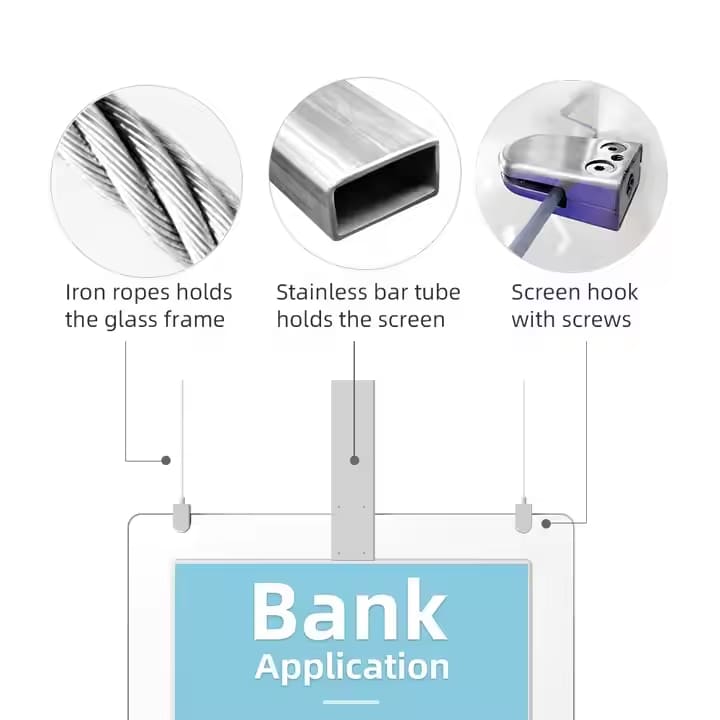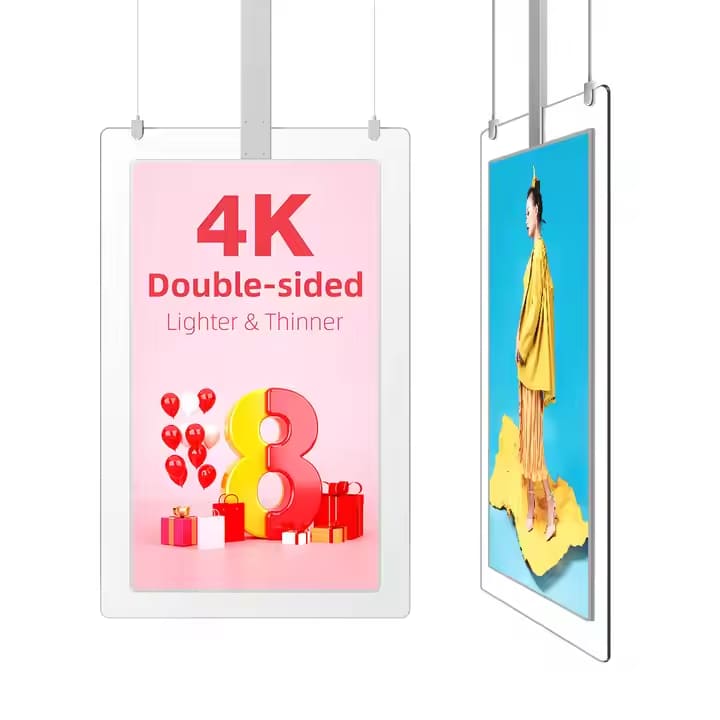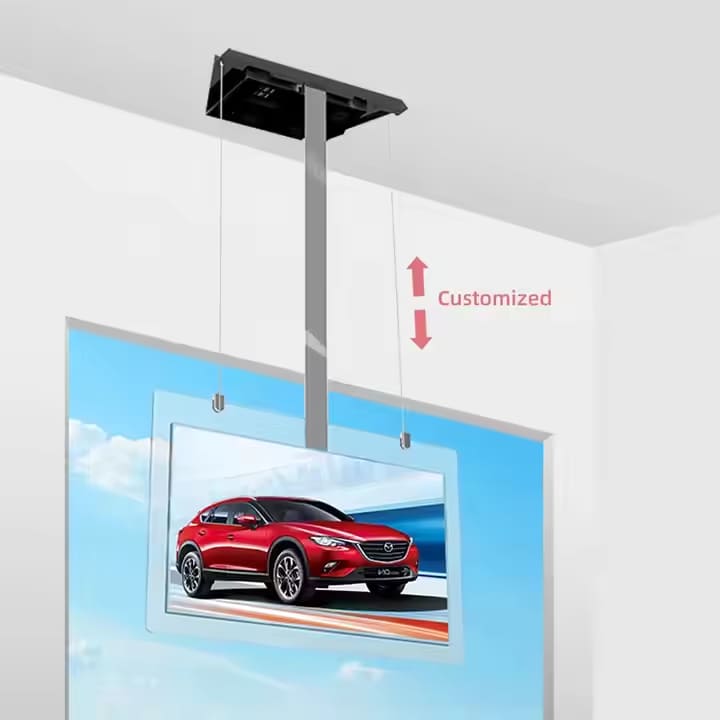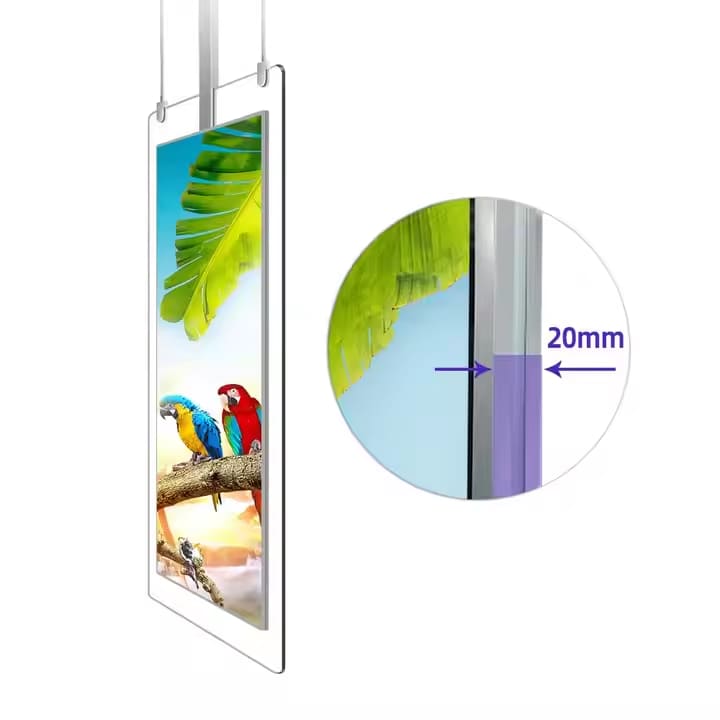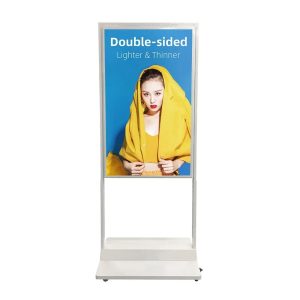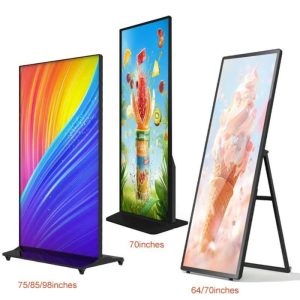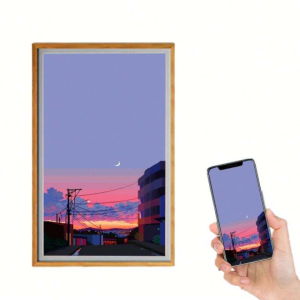More about the product
Dual Screen Window Display is an innovative digital signage solution that combines two screens (typically LCD or LED displays) to create an interactive or attention-grabbing display system. These setups are often used in retail stores, showrooms, and public spaces to showcase products, promotions, or information in a visually engaging way. The dual-screen configuration can be arranged in various ways, such as side-by-side, back-to-back, or at an angle, to maximize visibility and impact.
Dual Screen Configuration
Two screens working together to display synchronized or complementary content. Can be arranged in different orientations (e.g., side-by-side, back-to-back, or angled).
Product's Features
Dual Screen Window Displays are a versatile and impactful solution for businesses looking to enhance customer engagement, showcase products, and deliver dynamic content in a visually appealing and space-efficient manner.
- Eye-Catching Design: Dual screens create a visually striking display that attracts attention
- Interactive Features: Engages customers with touchscreens or motion sensors.
- Flexibility: Can be used for advertising, information dissemination, or interactive services.
- Space-Saving: Ideal for areas with limited space, such as storefronts or small lobbies
Space-Saving Design
Compact and versatile, making it ideal for storefronts, lobbies, or small spaces. Can be mounted on walls, stands, or suspended from ceilings.
Branding Opportunities: Customizable frames, logos, and themes to match the business's identity. Acts as a powerful marketing tool to attract customers.
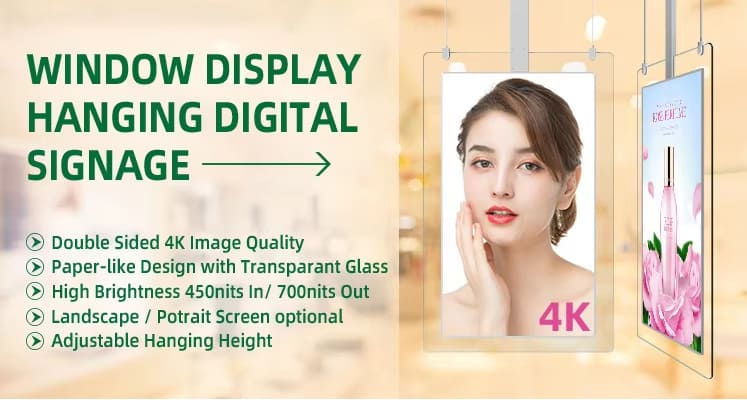
Screen sizes | 43” & 55” |
Display resolution | Full HD 1920x1080px or 4K optional |
Brightness | 450 cd/m² (700cd/m² outside optional) |
Contrast ratio | 4000:1 |
Aspect ratio | 16:9 (landscape) / 9:16 (portrait) |
Response time | Standard Non-touch (Capacitive 3ms) |
Viewing angles | 178° horizon,178° vertical |
System version | Android 9.0 / Win 10 i3/i5 |
Network connection | RJ45 Ethernet, WiFi |
Input power | AC 110 240V, 50/60Hz |
Power consumption | 80W – 100W |
Standby consumption | <5W |
Operating temperature | – 30°C ~ 50°C |
Operating humidity | 10% – 90% |
Operating life | >50,000hrs |
Supplied accessories | WIFI antenna, screws, key, warranty card, remote control, power cable |
Optional function | Upgrade to 1500 cd/m² Custom branding (Color & Logo) |
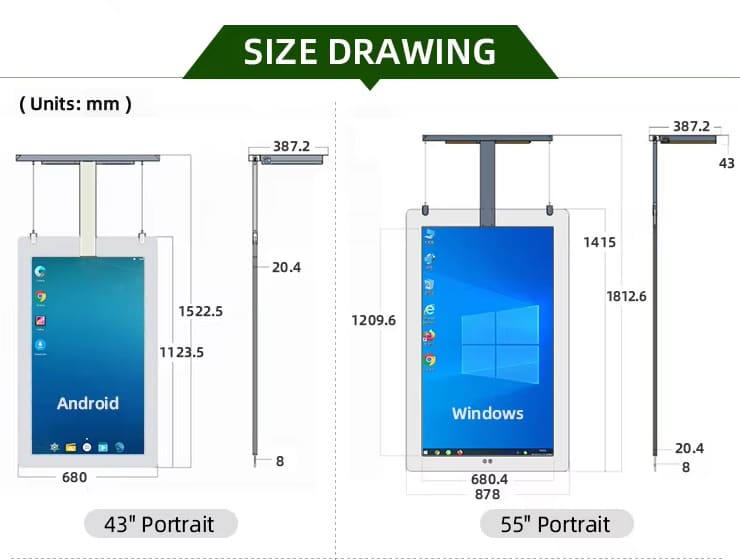
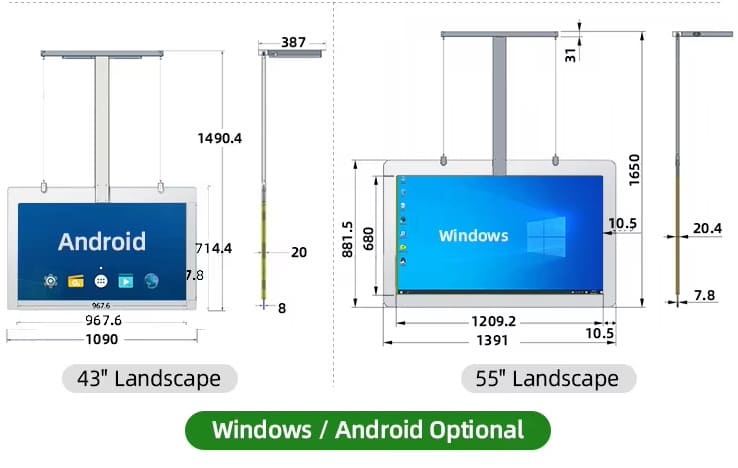
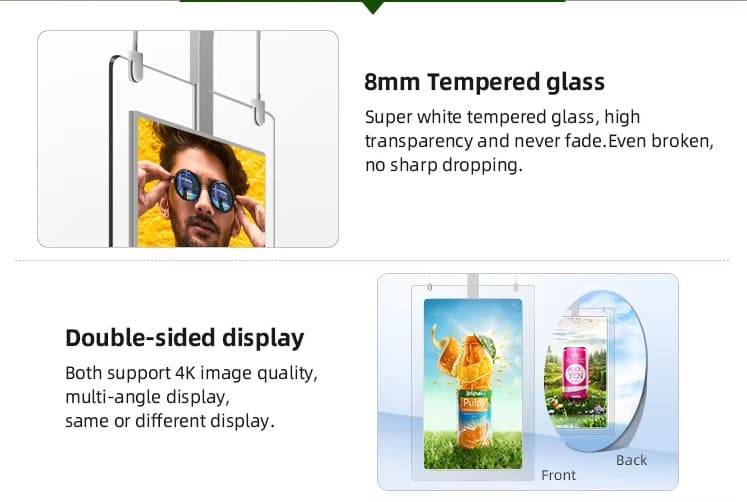
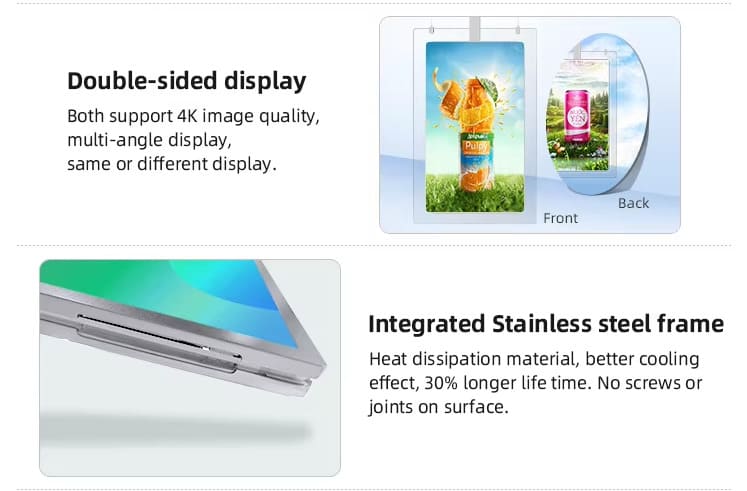
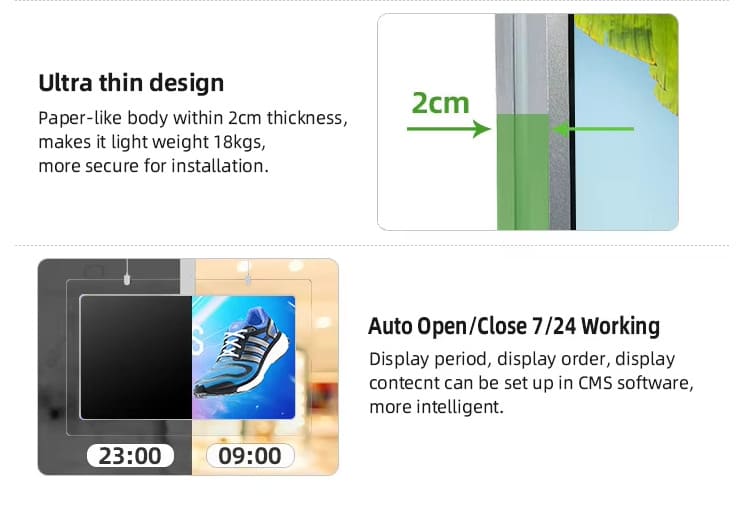

Benefits of Dual Screen Window Displays:
Increased Engagement:
Dual screens capture attention more effectively than single-screen displays.
Interactive features encourage user interaction and longer engagement times.
Versatility:
Suitable for a wide range of industries and applications.
Can be customized to meet specific business needs.
Space Efficiency:
Compact design maximizes visibility without occupying much space.
Ideal for storefronts, lobbies, or small areas.
Dynamic Content:
Ability to display synchronized or complementary content on both screens.
Real-time updates keep content fresh and relevant.
Brand Visibility:
Acts as a powerful marketing tool to attract customers and reinforce branding.
Can display promotions, ads, or social media feeds.
Cost-Effective Advertising:
Reduces the need for printed materials like posters or flyers.
Can display multiple ads or messages in rotation, maximizing ROI.
Common Use Cases for Dual Screen Window Displays:
Retail Stores:
Showcase products, promotions, or new arrivals in storefront windows.
Interactive catalogs for customers to browse items.
Showrooms:
Highlight product features, specifications, or demonstrations.
Create immersive experiences for potential buyers.
Restaurants and Cafes:
Display menus, specials, or nutritional information.
Entertain customers with interactive content or games.
Corporate Lobbies:
Welcome visitors with company information, announcements, or branding.
Display real-time data, such as stock prices or news updates.
Trade Shows and Exhibitions:
Attract attendees with dynamic, eye-catching displays.
Provide interactive product demos or information.
Public Spaces:
Share wayfinding maps, event schedules, or advertisements in malls, airports, or transit hubs.
Engage passersby with interactive content.
Museums and Galleries:
Enhance exhibits with interactive displays or multimedia content.
Provide additional information about artworks or artifacts.


